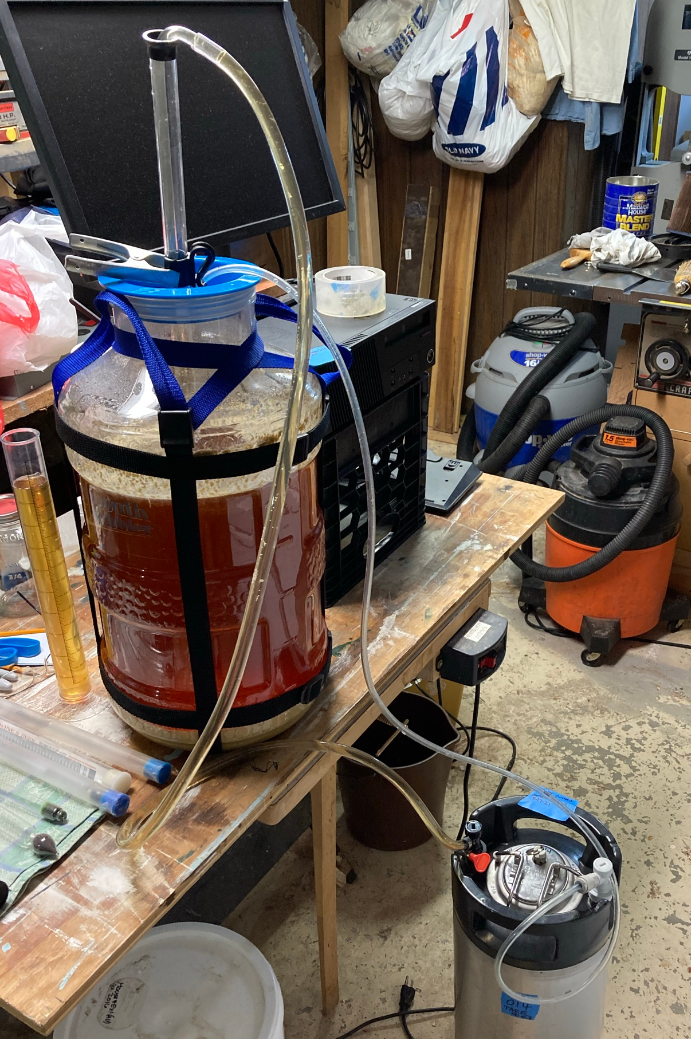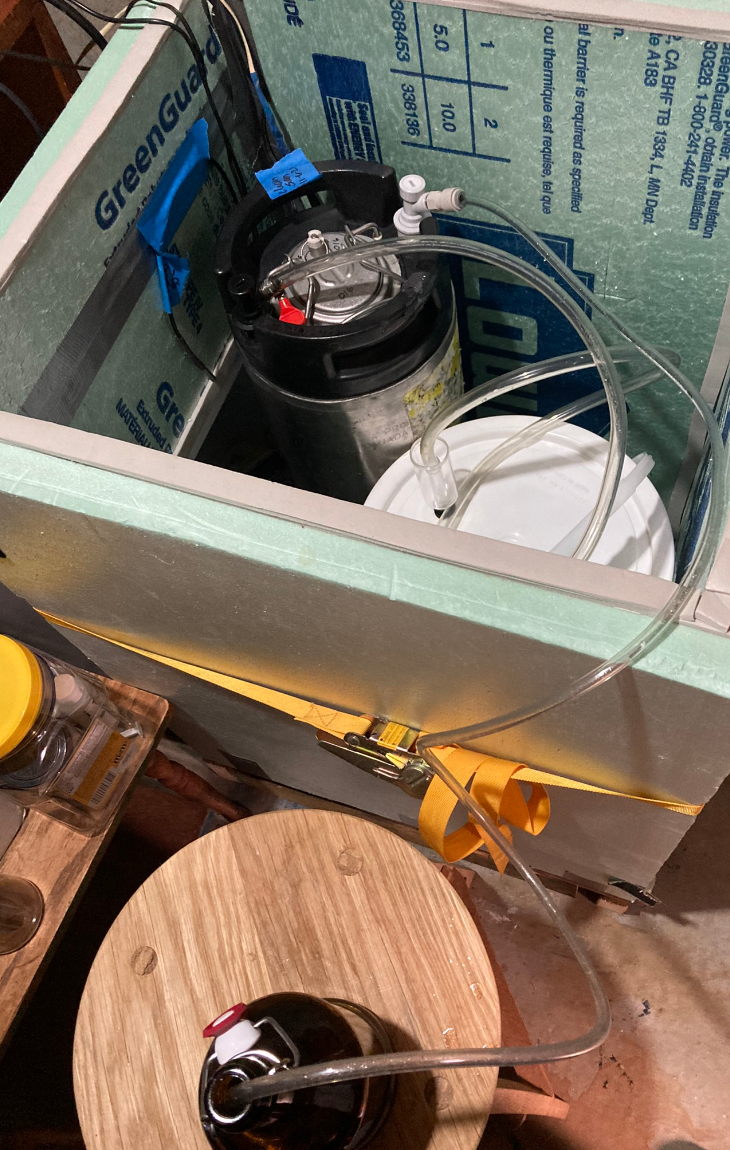I did my first forced CO2 transfer today from my glass carboy to my keg. It was a success (beer ended up in the right place and I didn’t blow up the carboy) but I can definitely improve. Most of all, it was a lot slower than I expected. I didn’t dare turn the pressure up too high and my orange rubber carboy cap had to be held on so as not to leak gas. I naively thought I didn’t need gravity so started with both vessels on the same table. I quickly realized that wasn’t working as well as it could and managed to lower the keg as much as I could. I realize now that I need to make better use of the normal gravity-powered siphon action and just use the CO2 to kick things off and displace oxygen. I’ll definitely get a longer hose and increase the height difference.
Anyway, my question is about the hose—1/4” ID. My racking cane is also 1/4” ID. I’m using the keg’s dip tube as well and the QD which also has a limited inner diameter. Will a thicker hose help move beer faster given these other points stay the same?
Anyway, my question is about the hose—1/4” ID. My racking cane is also 1/4” ID. I’m using the keg’s dip tube as well and the QD which also has a limited inner diameter. Will a thicker hose help move beer faster given these other points stay the same?














































![Craft A Brew - Safale BE-256 Yeast - Fermentis - Belgian Ale Dry Yeast - For Belgian & Strong Ales - Ingredients for Home Brewing - Beer Making Supplies - [3 Pack]](https://m.media-amazon.com/images/I/51bcKEwQmWL._SL500_.jpg)












